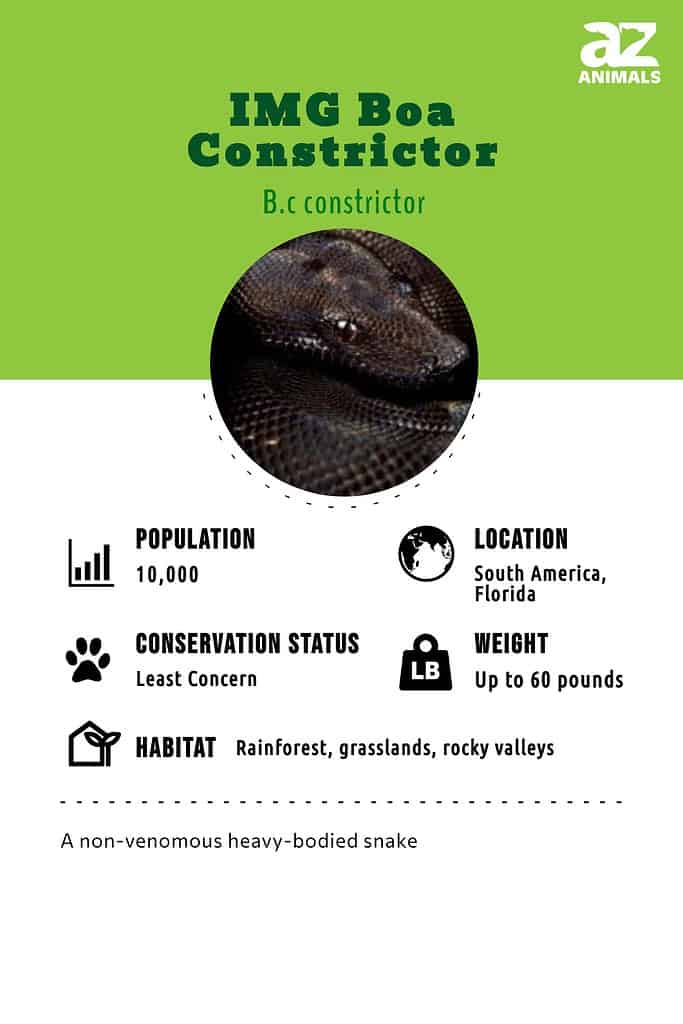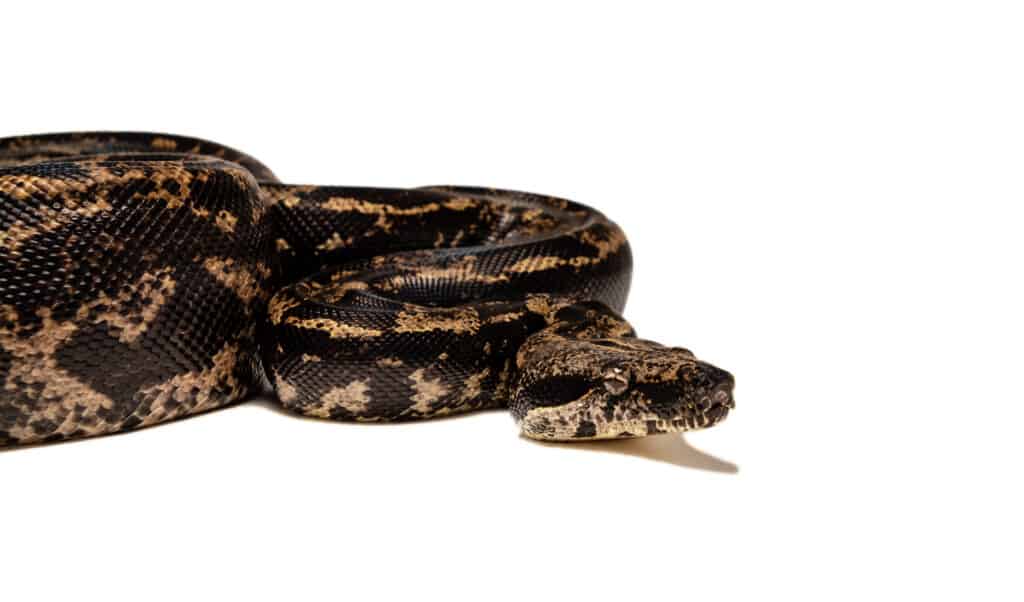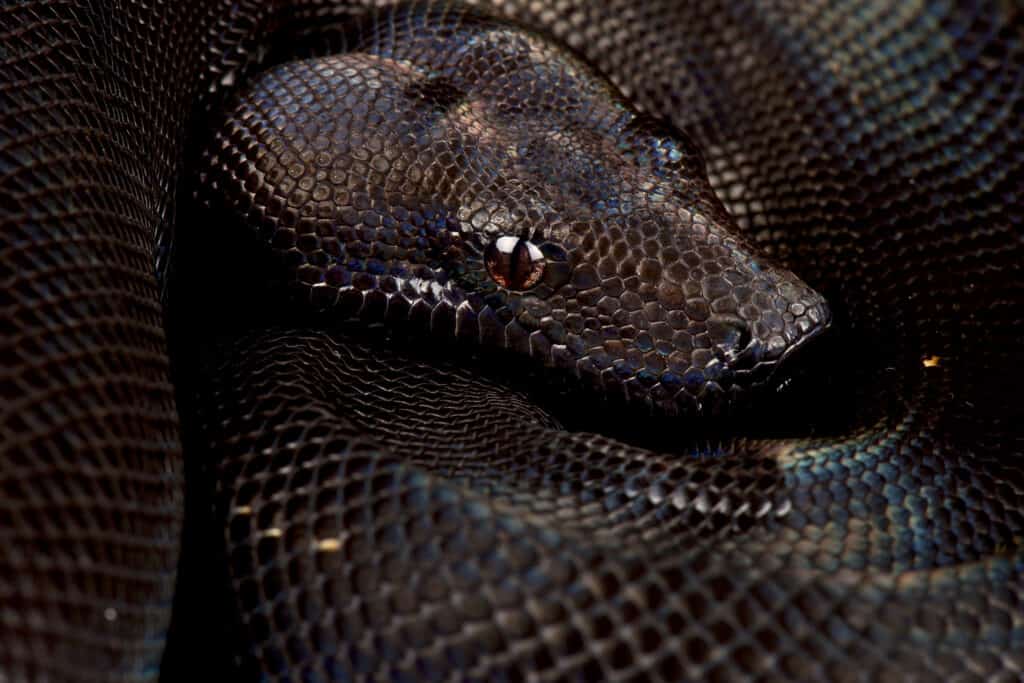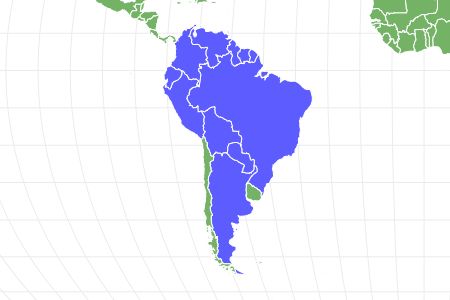IMG Boa Constrictor
Boa Constrictor
The first IMG boa was born in a litter of anerythristic boas.
Advertisement
IMG Boa Constrictor Scientific Classification
- Kingdom
- Animalia
- Phylum
- Chordata
- Class
- Reptilia
- Order
- Squamata
- Family
- Boidae
- Genus
- Boa
- Scientific Name
- Boa Constrictor
Read our Complete Guide to Classification of Animals.
IMG Boa Constrictor Conservation Status
IMG Boa Constrictor Facts
- Prey
- Rats, mice, sometimes small rabbits
- Name Of Young
- neonates, snakelets
- Group Behavior
- Solitary except during mating season
- Fun Fact
- The first IMG boa was born in a litter of anerythristic boas.
- Most Distinctive Feature
- Nearly black as adults
- Gestation Period
- 100-120 days
- Litter Size
- 10-65 babies
- Lifestyle
- Diurnal/Nocturnal
- Favorite Food
- Rodents
- Common Name
- Boa
- Location
- South America
IMG Boa Constrictor Physical Characteristics
- Color
- Grey
- Black
- Skin Type
- Scales
- Lifespan
- 20+ years
- Length
- Up to 13 feet
- Age of Sexual Maturity
- 2-4 years
- Venomous
- No
- Aggression
- Low
View all of the IMG Boa Constrictor images!
The IMG boa constrictor changes color as it ages, often becoming almost black.
Designer snakes have been popular among ball pythons for a few decades. However, boa constrictors have fewer color and pattern mutations, so breeders constantly seek to develop new and beautiful colors for snake enthusiasts.

4 Incredible Facts
- IMG stands for “Increased melanism gene” and refers to their tendency to darken with age.
- Peter Kahl discovered the color mutation and later proved it genetic in 2007.
- Depending on the locality and feeding schedule, boa constrictors can reach 13 feet in length.
- IMG boa constrictors sometimes become nearly black as they age.
Scientific Name and Classification
Boa constrictors are one of the few animals where at least one of their common names is their scientific name. Until recently, the species Boa constrictor consisted of one species with numerous subspecies based on locality or color variation. The Colombian boa and Central American boas are good examples of this. They were classified as Boa constrictor constrictor and Boa constrictor imperator, respectively. However, more recent research indicates that this is incorrect and that they are different species, Boa constrictor and Boa imperator.
Boa constrictors are also called red-tailed boas because their color pattern in the saddle markings shifts to red at the tail.
Appearance and Behavior

Traditionally, boas are gray, cream, or brown bases with oval saddle markings that become more pronounced and very red as they approach the tail.
©iStock.com/Michael McDonald
IMG boa constrictors are a color mutation that stands for “increased melanism gene.” It describes how their color changes as they age. Their heads are triangular with blunt noses that are just a little pointed. IMG boas are active at all hours of the day and have elliptical, cat’s-eye pupils like other boa constrictors. These snakes have a mouth full of razor-sharp, recurved teeth that are designed to hold prey in place while the snake subdues the animal for leisurely swallowing. Along their labial (lip) scales, IMG boas have heat-sensing pits that allow them to find warm-blooded food, even at night.
Boa constrictors are large, heavy-bodied snakes that, as their name suggests, constrict their prey to subdue it before swallowing it whole. They’re big, powerful snakes that often exceed ten feet in length as adults.
Traditionally, boas are gray, cream, or brown bases with oval saddle markings that become more pronounced and very red as they approach the tail. These may be completely absent in the IMG boa mutation, and the head stripes typical of boa constrictors may either blend with the base color or be absent.
Owning one of these as a pet means that you’ll have to have help handling it, not because they’re overly aggressive. Rather, accidents happen because they’re big, and snakes do snake things, given the right stimulus. That aside, the species is relatively docile and does make a beautiful pet.
Origins

IMG boa constrictors are a color mutation that stands for “increased melanism gene.” It describes how their color changes as they age.
©reptiles4all/Shutterstock.com
In the early 2000s, Peter Kahl found the first female IMG boa in a litter of anerythristic boas and immediately spotted the difference. Anerythristic snakes are silvery and lack the ability to produce red pigment. However, the IMG boa looked like a normal red-tailed boa with more black pigment.
Peter Kahl, the first breeder to prove the mutation genetic, said that it was the blackest anerythristic Colombian boa he had ever seen. The IMG boa constrictor looks like a darker version of a standard red-tailed boa when it’s born. You can tell that they’re different, but it’s not until after their first few shed cycles that the difference becomes more obvious. Snakes with this genetic mutation become darker and darker over the course of their lives; some individuals become almost completely black in the first year or two after they’re born.
Habitat and Diet
Boa constrictors are comfortable in a wide array of natural habitats in South America. Their range extends across most regions of the continent, including Brazil, Bolivia, and Venezuela; they’re only absent from Chile and Uruguay. Boas inhabit everything from tropical rainforests and the Amazon Basin to dry grasslands or rocky terrain.
These snakes seem to have established a breeding population in southern Florida, causing many problems for native wildlife. Their large size means they can eat larger warm-blooded prey like small deer and even native alligators. Boa constrictors and Burmese pythons are hunted by wildlife officials and snake hunters in Florida in an attempt to reduce their population.
Keeping in mind the native habitats will help you set up a proper enclosure for your boa. These snakes are semi-arboreal and need plenty of ground and climbing space. Adults of the species spend more time on the ground than in the trees, probably due to their size. However, providing climbing opportunities keeps their minds active. These are fairly active snakes, and even holding one is more of an activity than it is with ball pythons because boa constrictors are very inquisitive.
As with other boas, IMG boa constrictors eat small mammals, birds, snakes, and lizards. They’re opportunistic and are willing to eat most prey items that they can fit into their mouths.
Predators, Threats, Conservation, and Population
This color mutation isn’t likely found in the wild, although stranger things have happened. These snakes are selectively bred specifically for sale in the pet trade. As such, they also don’t have any natural predators. However, boa constrictors in the wild are classified as a species of least concern by the IUCN Redlist of Threatened Species. Their population is decreasing, but not quickly enough to be placed in a higher category. Wild boas, especially juveniles, are prey for many larger carnivores. Wild felids like lynx and bobcats and birds of prey likely feed on these snakes. Since these snakes can swim, they may fall prey to crocodilians in the water.
Even though over 100,000 snakes have been imported to the United States since the 1970s, most pet boa constrictors are captive-bred individuals. The species is widespread across the northern half of South America, and an accurate count of snake species is difficult to obtain. However, the population doesn’t appear to be fragmented, and the species is not threatened.
Reproduction, Babies, and Lifespan
Boa constrictors are live-bearing snakes and give birth to between 10 and 65 babies after 100 to 120 days of gestation. The babies are independent from the moment they’re born and may only stay with their mom for a few days after they’re born. The snakes reach maturity between three and four years of age, and females generally breed every other year in the wild. With proper care, IMG boa constrictors can live 20 to 30 years, but there are a few reliable reports of individuals living 40 years.
Similar Animals
- The Boa Constrictor, also called the red-tailed boa, lives in South America.
- Emerald Tree Boas, while kept as pets, aren’t fond of being handled and prefer being left alone.
- The Jamaican Boa is the only boa native to the island nation of Jamaica.
IMG Boa Constrictor FAQs (Frequently Asked Questions)
Where can you find an IMG boa constrictor?
This morph is unlikely to be found in the wild, as it’s a designer morph you’ll only find from breeders.
What do IMG boa constrictors eat?
These snakes eat a wide variety of prey, but primarily rats and mice. Larger individuals can eat chickens and other bigger prey items.
How do IMG boa constrictors hunt?
Snakes are ambush predators by nature. However, boa constrictors are also active hunters.
Are IMG boa constrictors dangerous?
Bigger individuals can be dangerous, but not because of aggression. These are big animals with a lot of strength.
Thank you for reading! Have some feedback for us? Contact the AZ Animals editorial team.
Sources
- IMG Boa Constrictor | Morphpedia / Accessed November 3, 2022
- Arzamendia, V., Cisneros-Heredia, D.F., Fitzgerald, L., Flores-Villela, O., Gagliardi, G., Giraudo, A., Ines Hladki, A., Köhler, G., Lee, J., Nogueira, C. de C., Ramírez Pinilla, M., Renjifo, J., Scrocchi, G., Urbina, N., Williams, J., Wilson, L.D. & Murphy, J. 2021. Boa constrictor. The IUCN Red List of Threatened Species 2021: e.T197462A2486405. https://dx.doi.org/10.2305/IUCN.UK.2021-2.RLTS.T197462A2486405.en. Accessed on 03 November 2022. / Accessed November 13, 2014


















